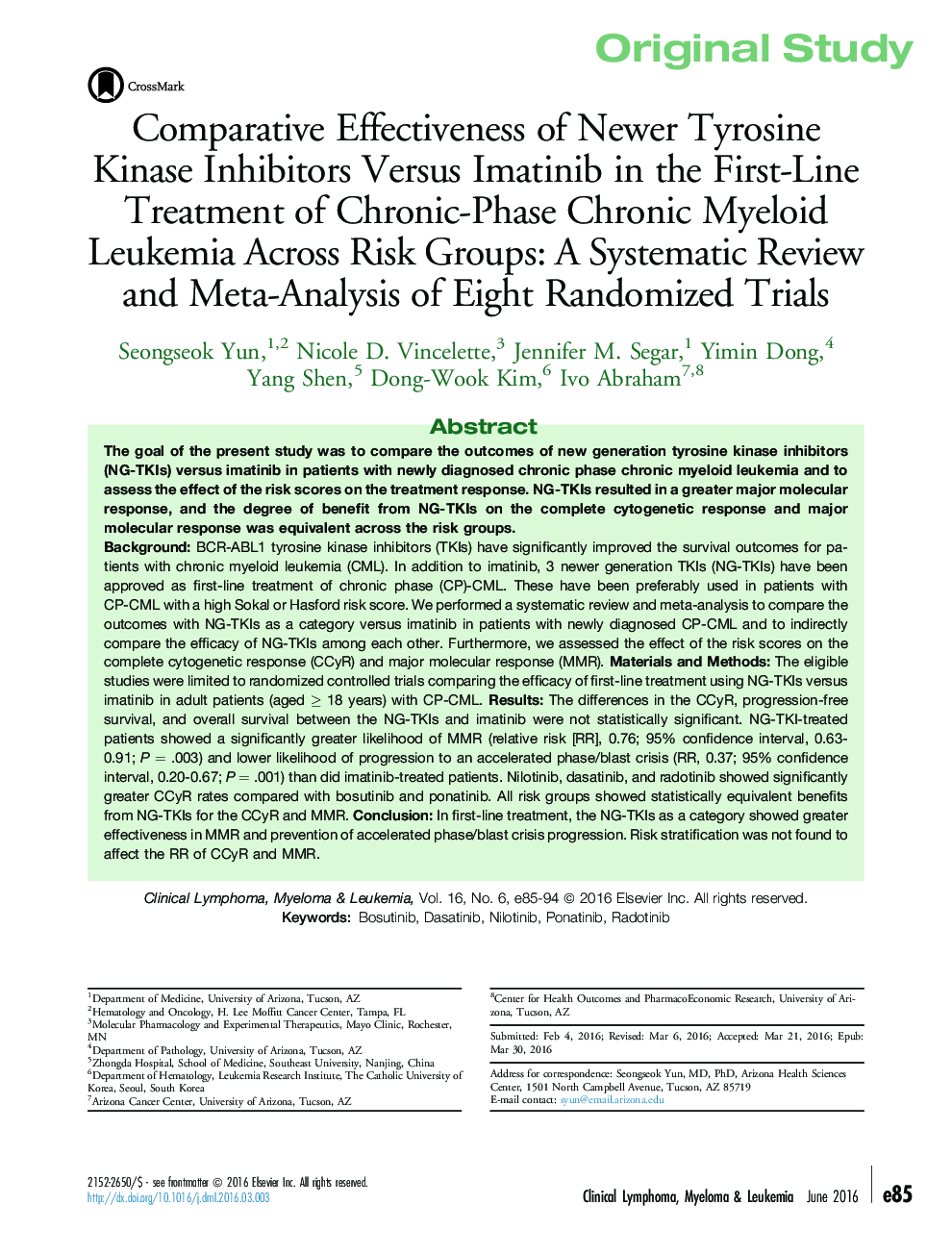| Article ID | Journal | Published Year | Pages | File Type |
|---|---|---|---|---|
| 2754282 | Clinical Lymphoma Myeloma and Leukemia | 2016 | 10 Pages |
BackgroundBCR-ABL1 tyrosine kinase inhibitors (TKIs) have significantly improved the survival outcomes for patients with chronic myeloid leukemia (CML). In addition to imatinib, 3 newer generation TKIs (NG-TKIs) have been approved as first-line treatment of chronic phase (CP)-CML. These have been preferably used in patients with CP-CML with a high Sokal or Hasford risk score. We performed a systematic review and meta-analysis to compare the outcomes with NG-TKIs as a category versus imatinib in patients with newly diagnosed CP-CML and to indirectly compare the efficacy of NG-TKIs among each other. Furthermore, we assessed the effect of the risk scores on the complete cytogenetic response (CCyR) and major molecular response (MMR).Materials and MethodsThe eligible studies were limited to randomized controlled trials comparing the efficacy of first-line treatment using NG-TKIs versus imatinib in adult patients (aged ≥ 18 years) with CP-CML.ResultsThe differences in the CCyR, progression-free survival, and overall survival between the NG-TKIs and imatinib were not statistically significant. NG-TKI-treated patients showed a significantly greater likelihood of MMR (relative risk [RR], 0.76; 95% confidence interval, 0.63-0.91; P = .003) and lower likelihood of progression to an accelerated phase/blast crisis (RR, 0.37; 95% confidence interval, 0.20-0.67; P = .001) than did imatinib-treated patients. Nilotinib, dasatinib, and radotinib showed significantly greater CCyR rates compared with bosutinib and ponatinib. All risk groups showed statistically equivalent benefits from NG-TKIs for the CCyR and MMR.ConclusionIn first-line treatment, the NG-TKIs as a category showed greater effectiveness in MMR and prevention of accelerated phase/blast crisis progression. Risk stratification was not found to affect the RR of CCyR and MMR.
